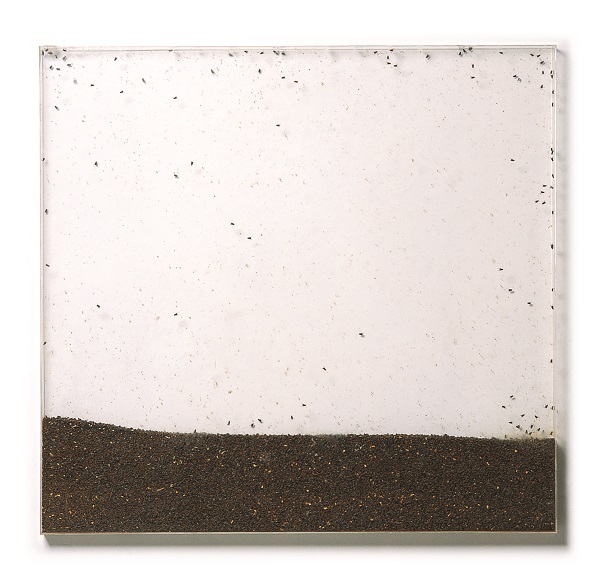They have an effect of extreme substantiality on the viewer, causing one writer to allude to their 'sheer clunky thingness', a phrase that belies the inherent elegance of Andrae's every installation.
Craige Andrae (SA)
Born 1965, Murray Bridge, South Australia
Craige Andrae is a questioner. His interrogative stratagem stems from Marcel Duchamp, as does, conceivably, his investment in a store–bought inventory of glass, timber, steel and other sub-industrial merchandise. He has also resuscitated Duchamp's dust, inviting that substance to colonise several of his faux–museological shelf constructions. More provocatively, a dust of deceasing flies and expended maggots distinguished an eerie vitrine he exhibited in the 1996 Adelaide Biennial.
Andrae's experience as a designer of commercial interiors and museum displays is a continuing source of subject matter and thematic content. There is a sense in which his 'art' is the advanced condition of his 'work'. He is exceptional among younger Australian sculptors in literally producing 'art works'. Yet these aren't empty takes on the evacuations of cultural consumerism. They have an effect of extreme substantiality on the viewer, causing one writer to allude to their 'sheer clunky thingness', a phrase that belies the inherent elegance of Andrae's every installation.
Proving he is not tethered to conventions, least of all his own, a recent enterprise involved the unexpectedly poetic planting of sixty small, white crosses on a lawn behind the Museum of South Australia. Opportunely, this work, Memorial, figured in an exhibition called Obiter Dictum, a thing said by the way.
Bruce James from the 1998 Samstag catalogue, Samstag 98 : This Thing Called Art
1998 Anne & Gordon Samstag International Visual Arts Scholarship
1998 MA in Fine Art, Goldsmiths College, University of London
1995 Bachelor of Visual Art, South Australian School of Art, University of South Australia, Adelaide, Australia

